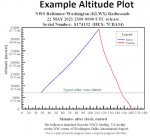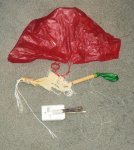Just saw this thread. I've been tracking and recovering the WX balloons out of Salt Lake City, Utah, Elko, Nevada, and Boise, Idaho for the past few years as a fun and challenging hobby and to get me out of the house. I was starting to receive a lot of inquires on my personal Facebook page about it so I started a Facebook group titled
No Weather Balloon Left Behind - North America Radiosonde Chase Group. The purpose of the group is to share experiences and offer information on how and where to track the balloons. Anyone interested is welcome.
Also, I've been using Sonde for decoding LMS6 (403 & 1680) and I find it more reliable for decoding than SondeMonitor. Unfortunately the developer isn't interested in adding an NEMA GPS output for mapping, and last I checked, DFM-17 isn't an option. Still hoping he adds it.
Auto_RX is a feature-rich system with live prediction of landing area based on realtime balloon trajectory and will decode DFM-17, but requires a Raspberry Pi and knowledge of Linux. I'm getting ready to setup an Auto_RX station in Southwest Idaho so we'll see how that that goes. Cheers everyone.



